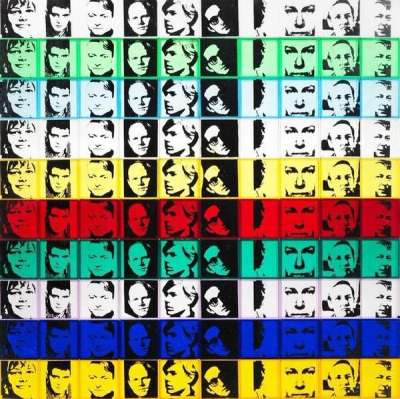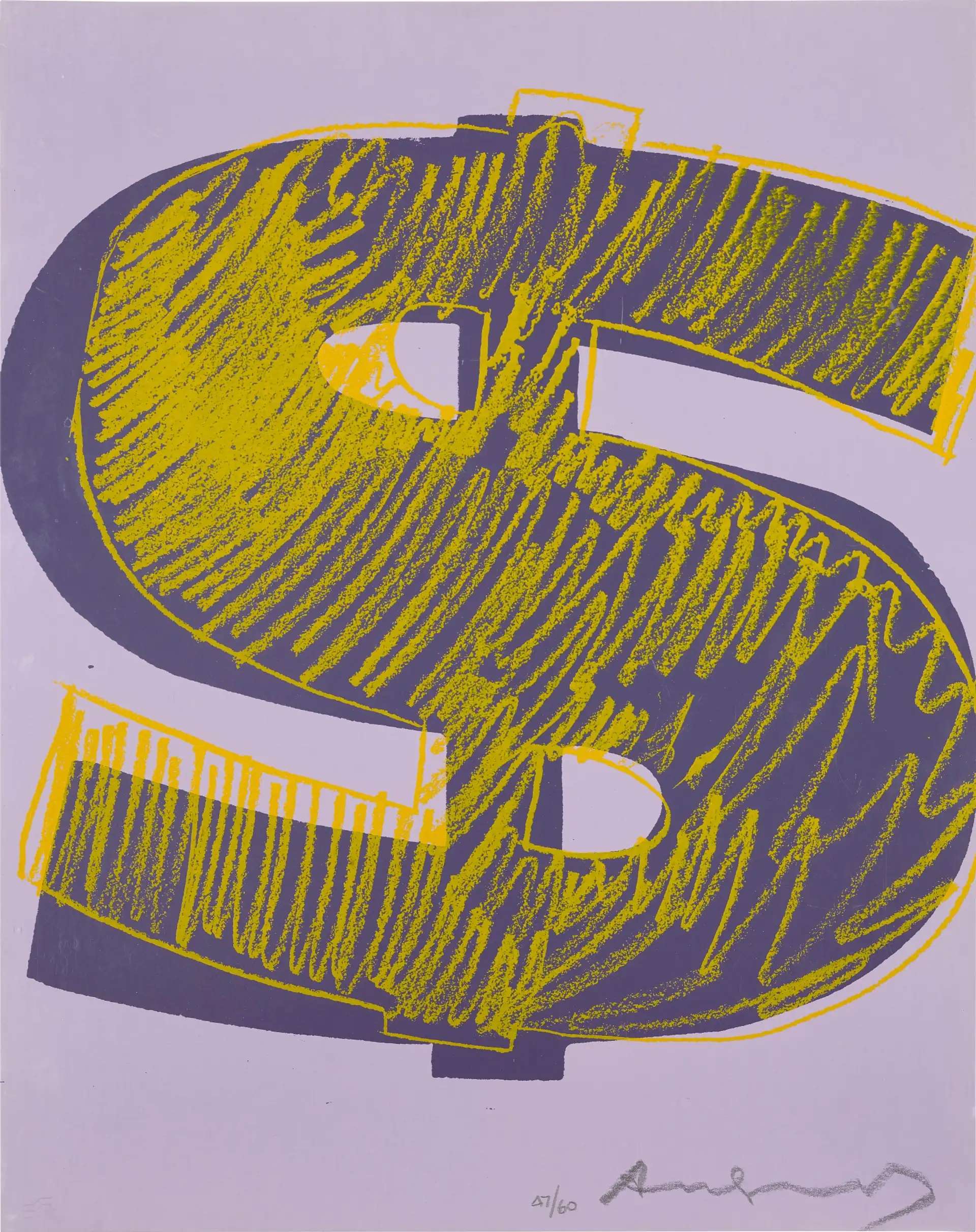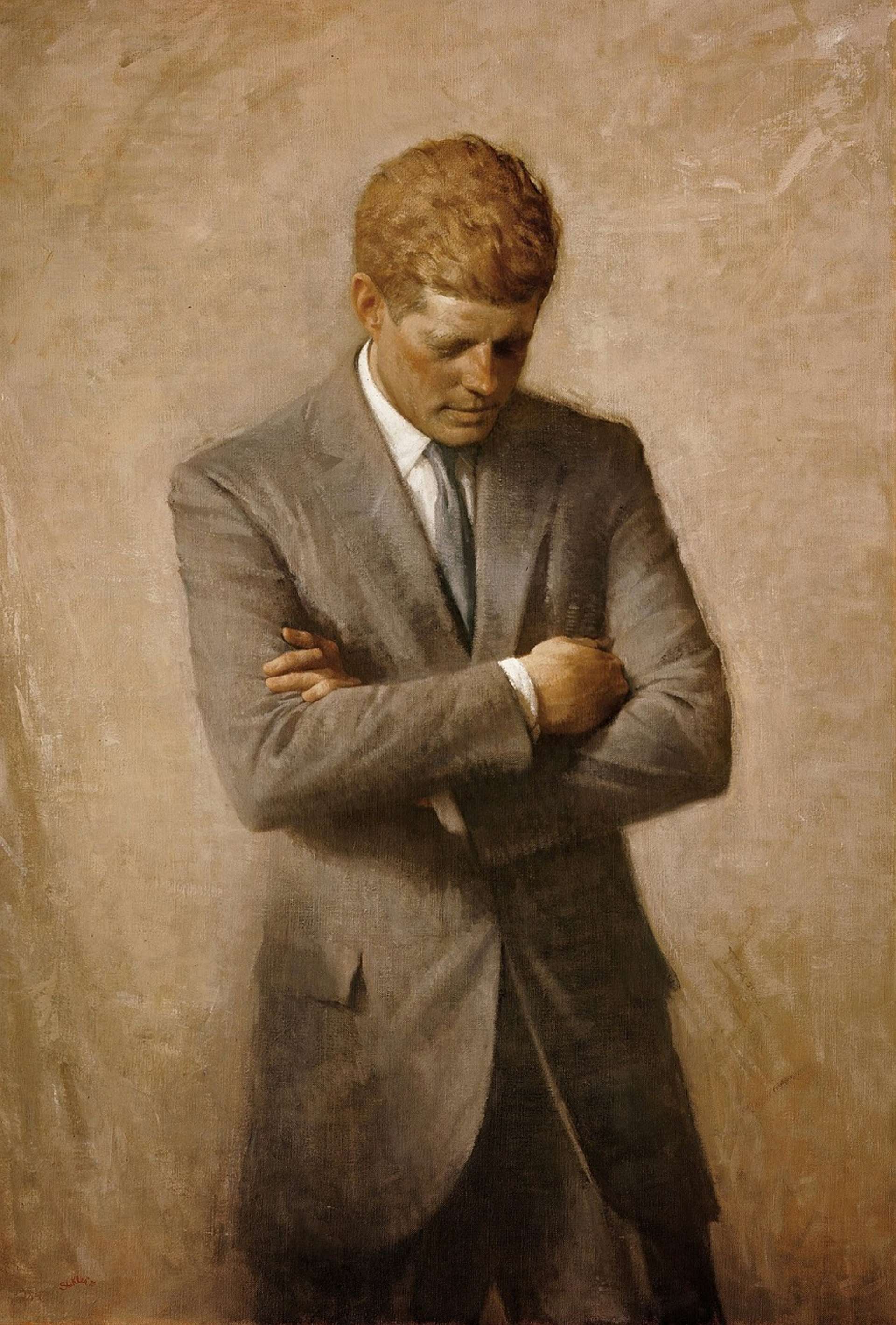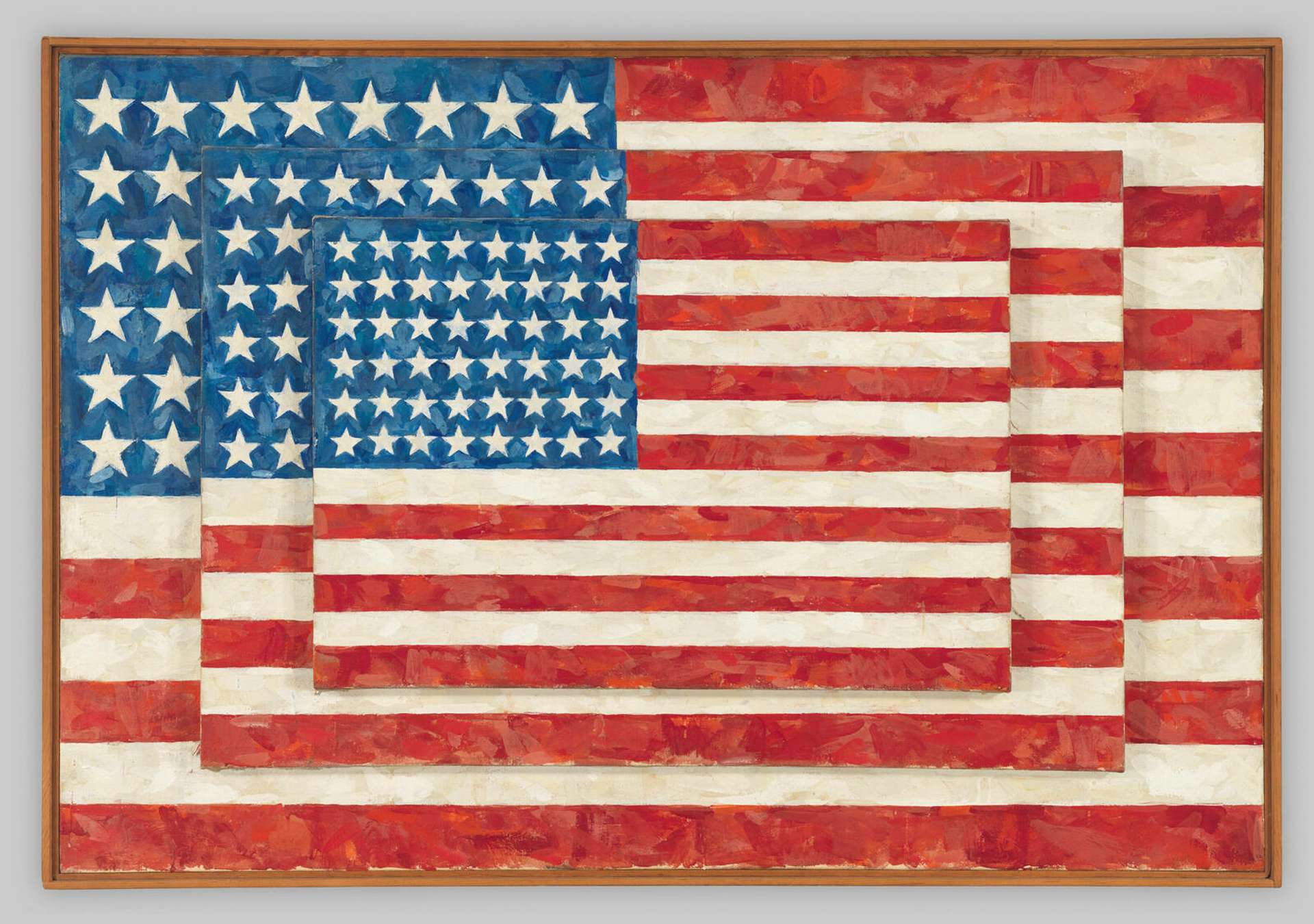 Image © Whitney Museum of Modern Art / Three Flags © Jasper Johns 1958
Image © Whitney Museum of Modern Art / Three Flags © Jasper Johns 1958In addition to his artistic achievements, Jasper Johns has also made a significant impact on the art market. His works have consistently commanded high prices at auctions, and he has held the record for the highest price achieved by a living artist multiple times. Renowned for his inventive use of familiar symbols and his profound exploration of artistic expression, Johns' works have not only impressed critics and enthusiasts but have also proven to be highly coveted by collectors and investors alike. The high demand for his pieces has resulted in consistently high prices at auctions around the world, highlighting his unparalleled influence on the market.
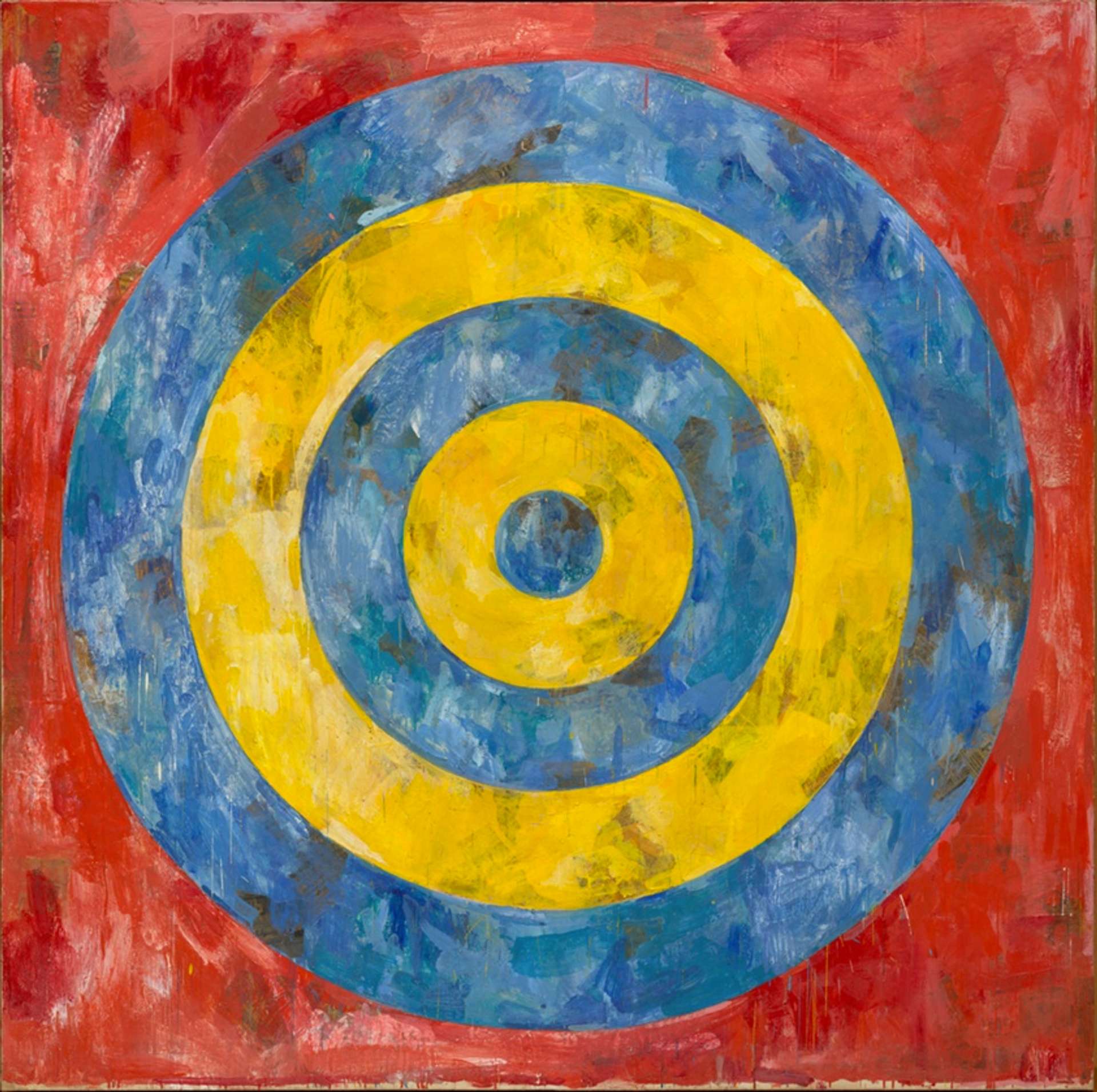 Image © The Art Institute of Chicago / Target © Jasper Johns 1961
Image © The Art Institute of Chicago / Target © Jasper Johns 1961Who Is Jasper Johns?
92-year-old Johns was born on May 15th 1930 and has had an extensive career as one of art history’s most celebrated Pop and Abstract Expressionist artists.
Throughout his career, Johns has explored various mediums, including painting, printmaking, and sculpture. He is known for his distinctive use of iconic and everyday images, such as flags, targets, maps, and numbers. Johns' innovative approach extends to his printmaking techniques. He has experimented with lithography and etching, creating layered compositions that captivate the viewer's eye. His artistic exploration goes beyond technique, as he often incorporates familiar symbols like flags, targets, maps, and numbers into his works, inviting viewers to reconsider their significance.
Johns has received numerous accolades and widespread recognition for his artistic achievements. His works have commanded high prices at auction, setting records for the highest prices achieved by a living artist.
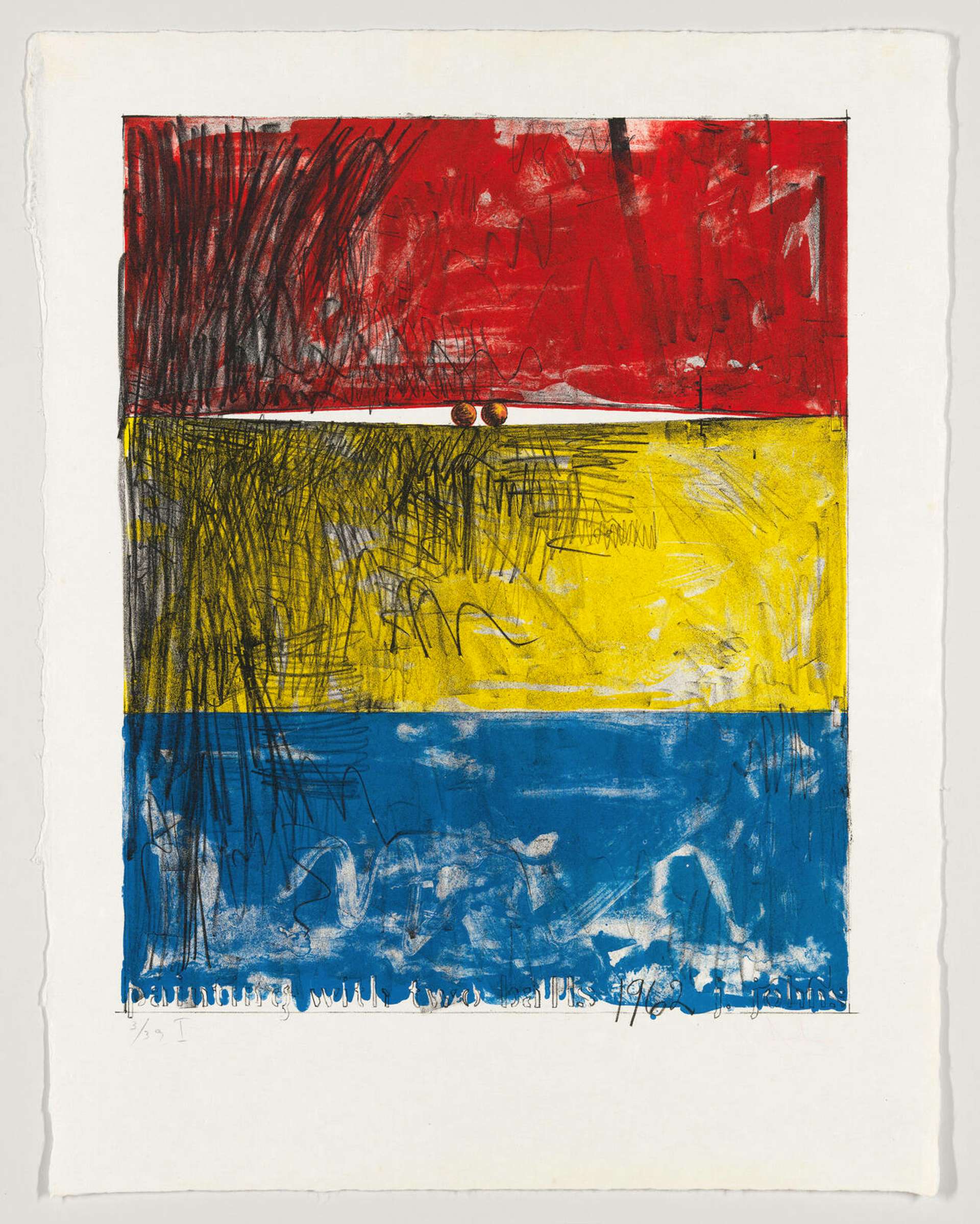 Image © The Whitney Museum of American Art / Painting With Two Balls I © Jasper Johns 1962
Image © The Whitney Museum of American Art / Painting With Two Balls I © Jasper Johns 1962An overview of Johns’ life before Flag
Johns' life before creating his first flag painting was characterised by personal challenges, artistic exploration, and transformative experiences. Born on May 15, 1930, in Augusta, Georgia, Johns had a complex upbringing shaped by his parents' separation. His artistic journey began to take shape when he enrolled at the University of South Carolina in 1947, where he studied for a year before moving to New York City and becoming a student at Parsons School of Design.
This period of study provided him with a solid foundation in artistic techniques and fostered his experimentation with various artistic mediums. However, his artistic development was temporarily interrupted when he was drafted into the Korean War in 1951. Serving in the military until 1953, Johns' time in the army had a profound impact on him, both personally and artistically. Upon his discharge at the age of 24, Johns made a bold decision that would set the stage for his artistic renaissance. He destroyed almost all of his previous works, seeking to break free from past expectations and redefine his artistic identity. It was during this time that he had a vivid dream of painting a large American flag, which would become the inspiration for his most iconic painting.
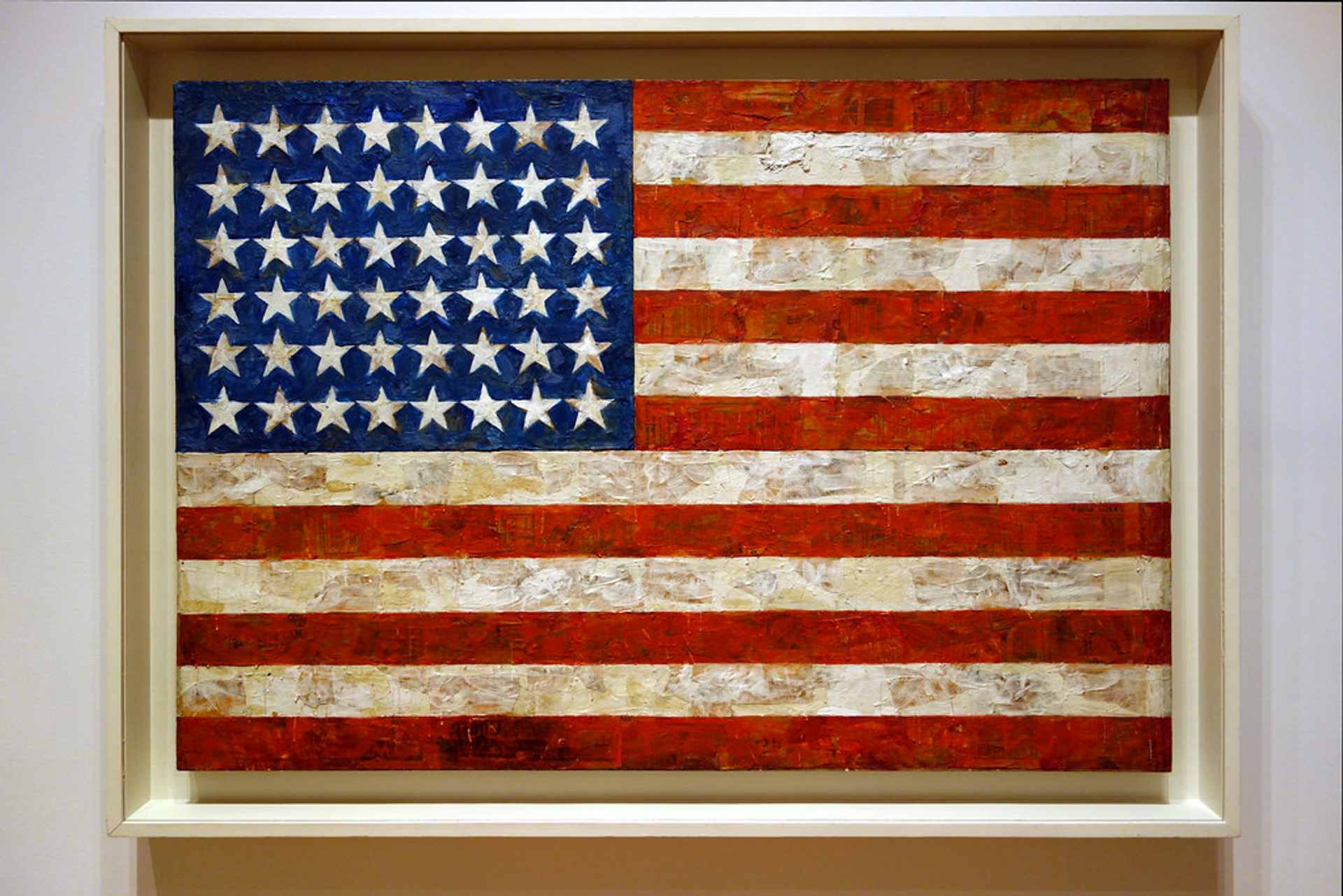 Image © Creative Commons via Flickr / Flag, side detail © Steven Zucker 2012
Image © Creative Commons via Flickr / Flag, side detail © Steven Zucker 2012 What is Jasper Johns Most Famous Piece?
Flag was painted during the same year of his discharge, 1954-55; it has gone on to be his most famous work and formed the foundation for his palpably American style for which the New York Times called him the United States’ "foremost living artist" in 2018. Since his first rendition, he has produced over 40 flag-centred works which pose the question to viewers: are these artworks flags, paintings, or something in between? By incorporating the flag into his art, Johns addresses themes of identity, patriotism, and the relationship between symbols and their meaning in American society.
One of the defining aspects of this piece and many of Johns' other works is his use of the encaustic technique, in which wax is melted and applied to the painting's surface -- creating a textured and layered effect. This innovative approach adds a sculptural element to his works, further distinguishing them from traditional paintings and enhancing their visual impact.
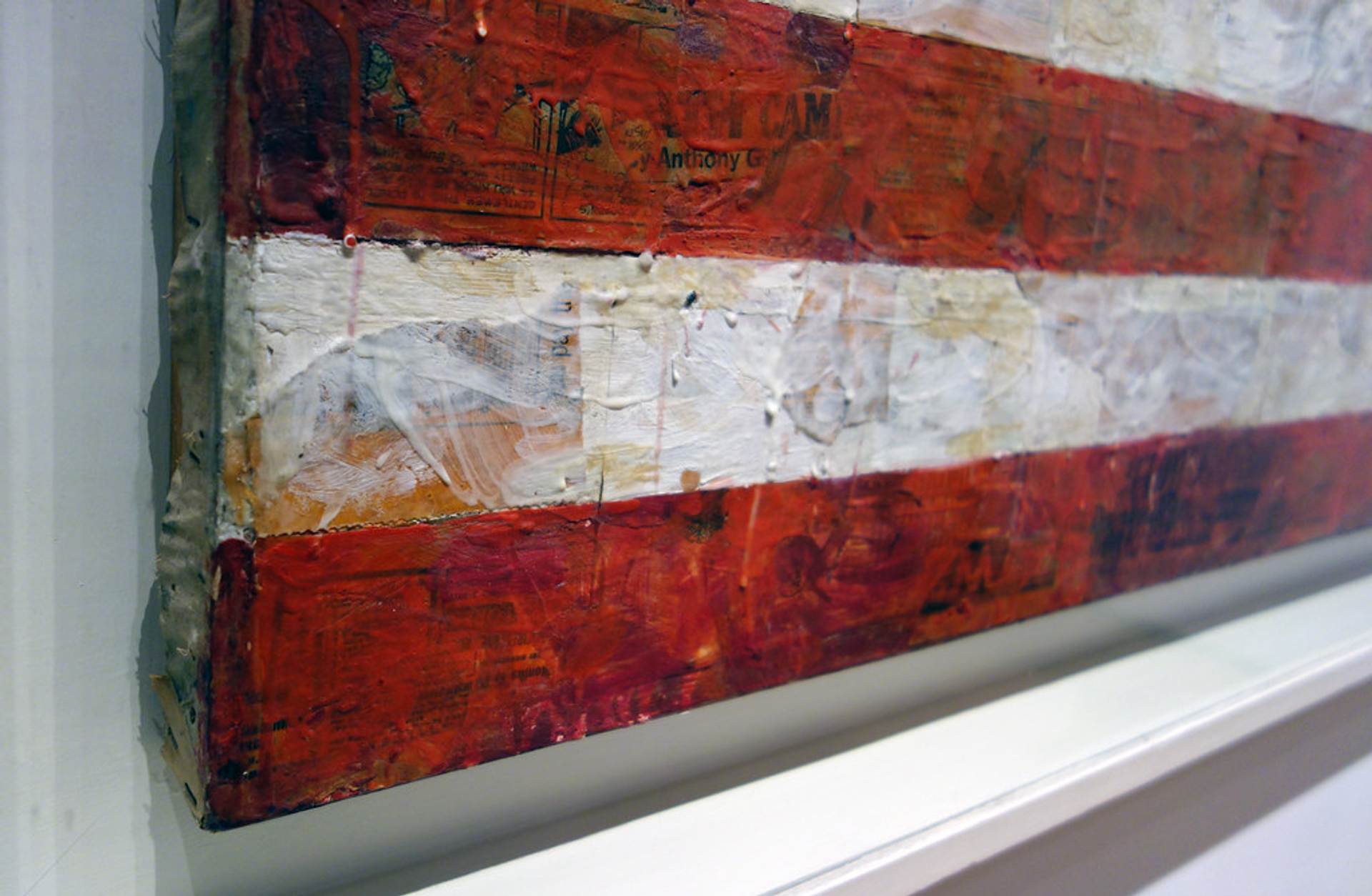 Image © Creative Commons via Flickr / Flag, side detail © Steven Zucker 2012
Image © Creative Commons via Flickr / Flag, side detail © Steven Zucker 2012 Why did Jasper Johns paint the flag?
As for the question of why Johns painted the flag, it is a subject of interpretation. While there is no definitive answer, it is believed that the flag held profound symbolism for Johns, representing both personal and national identity. By incorporating the flag into his art, he explores the complex relationship between individuality and collective representation.
How much did Jasper Johns’ flag sell for?
Johns’ artworks have fetched substantial prices in the art market. While the specific amounts can vary, his works have consistently commanded high prices at auctions. In 2014, Johns’ 1983 flag sold for $36 million at Sotheby’s, breaking his previous 2010 record of a staggering $28.6 million, setting the highest price ever achieved by a living artist at that time.
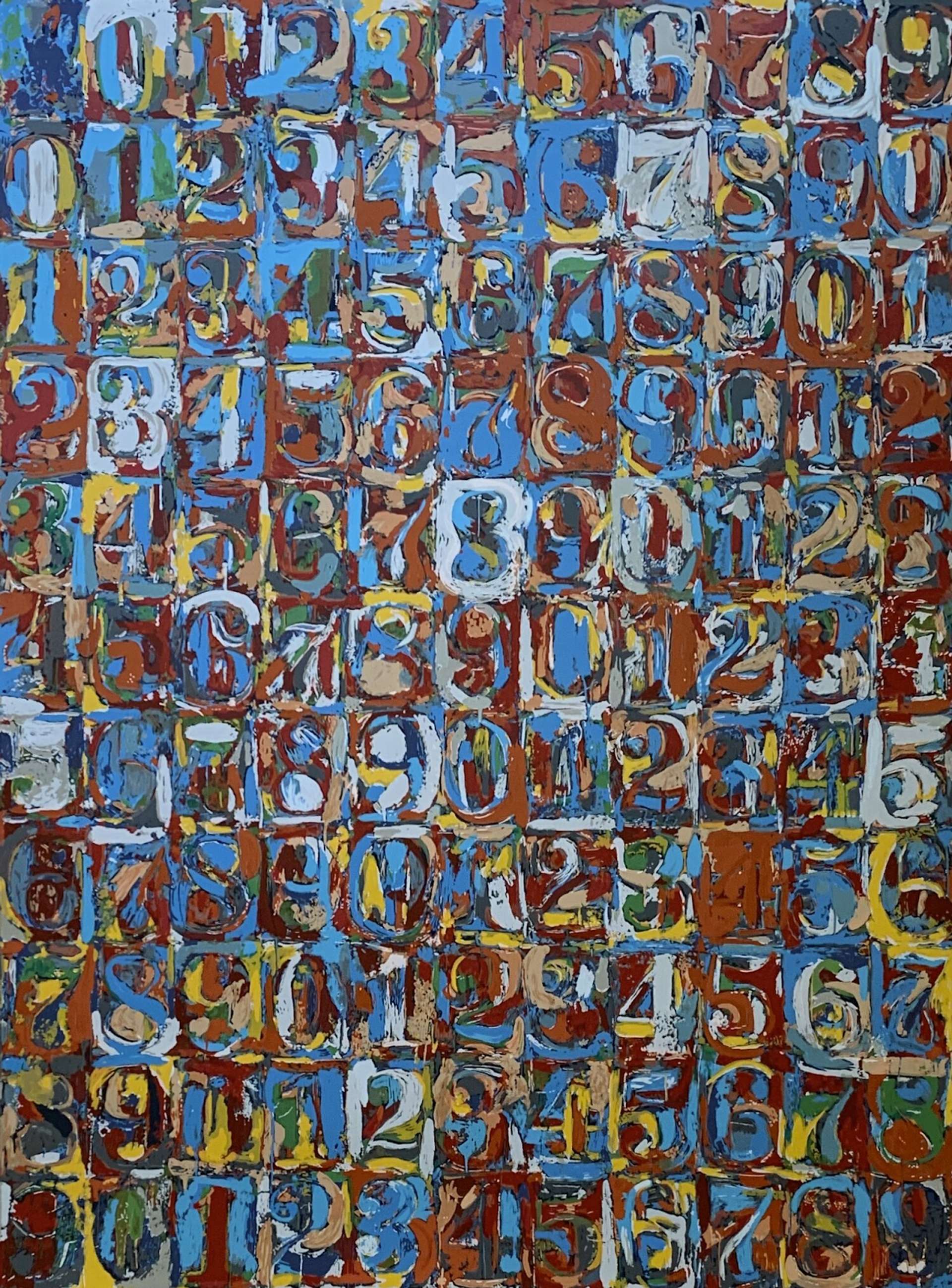 Image © Kwai Art / Numbers In Colors © Jasper Johns 1959
Image © Kwai Art / Numbers In Colors © Jasper Johns 1959Why did Jasper Johns paint numbers?
Johns incorporated numbers into his artwork as a deliberate artistic choice. In the late 1950s, numbers and text became significant motifs in his work, distinguishing him from the prevalent loose brushwork of abstract expressionism.
One of the captivating aspects of Johns' work is the ambiguity that arises from the interplay between representation and pattern. For example, a number 3 in his artwork can simultaneously be interpreted as both a numeric symbol and a series of curves. Similarly, his portrayal of an American flag can fragment it into a series of rectangles, defying the expected representation of the flag as a cohesive whole.
Numbers and text were already deeply ingrained in the minds of viewers, allowing him to create a dialogue between his artwork and the viewer's own associations and interpretations. The familiar yet distorted use of these motifs added layers of complexity to his work, inviting viewers to question their own perceptions and draw their own meaning.
In addition to numbers and text, Johns also ventured into sculpture, employing a similar approach. His sculptures often incorporated found elements, echoing the principles of the Dada movement. Initially created in wax and later cast in bronze, these sculptures further expanded the boundaries of his artistic expression and connected his work with a Dadaist lineage.
What techniques did Jasper Johns use?
Printmaking
Johns made significant contributions to the field of printmaking. He experimented with various printmaking techniques, including lithography and etching. His printmaking works often involved layering and overlapping images, creating complex compositions.
Collage
Collages have played a significant role in Johns' artistic practice. He incorporated found objects, newspaper clippings, and other ephemera into his artworks, adding elements of texture, contrast, and visual juxtaposition.
Sculpture
In addition to painting and printmaking, Johns explored sculpture as another creative avenue. He initially created sculptures using wax, manipulating the material to achieve his desired forms. These wax sculptures were later cast in materials such as bronze, capturing the tactile and three-dimensional qualities of his original creations.
Found Objects
It isn’t uncommon to see unconventional materials in Johns’ artworks. In addition to encaustic, he incorporated items such as cloth, wood, and metal into his pieces.
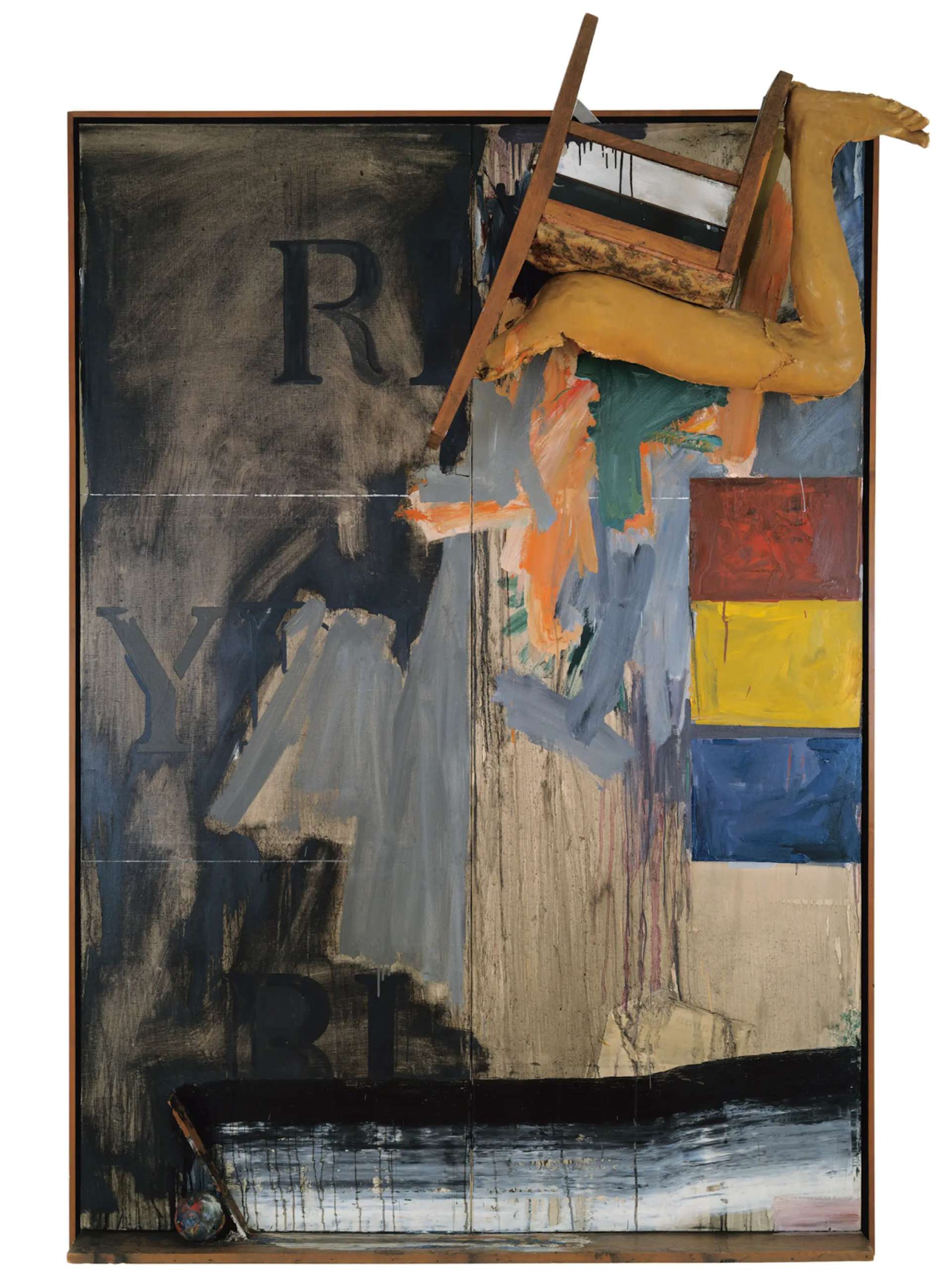 Image © Royal Academy of Arts / Watchman © Jasper Johns 1964
Image © Royal Academy of Arts / Watchman © Jasper Johns 1964Artists who inspired Jasper Johns
Marcel Duchamp
Duchamp's groundbreaking ideas and conceptual approach had a significant impact on Johns. Duchamp's concept of the "readymade," where ordinary objects are elevated to the status of art, resonated with Johns' interest and is seen in his works like Painted Bronze (Ballantine Ale). According to Johns’, Duchamp’s work was a “field where language, thought and vision act on one another.”
John Cage and Merce Cunningham
Though Cage was a musical composer and not a visual artist, Johns was impressed and inspired by his theories which he credits to his Abstract Expressionism. Choreographer Merce Cunningham also provided new perspective for Johns resulting in his work as a set and costume designer.
Robert Rauschenberg
Rauschenberg relationship with Johns had an obvious influence on Johns’ works. When we look at his 1964 piece Watchman, we see the physical manifestation of how. Viewers may note that this composition has a degree of kinship to Racushenberg’s assemblages in his Combines series. Granted, some works were a collaboration between the two, but even in works that Rauschenberg created alone, the common artistic thread is still present.
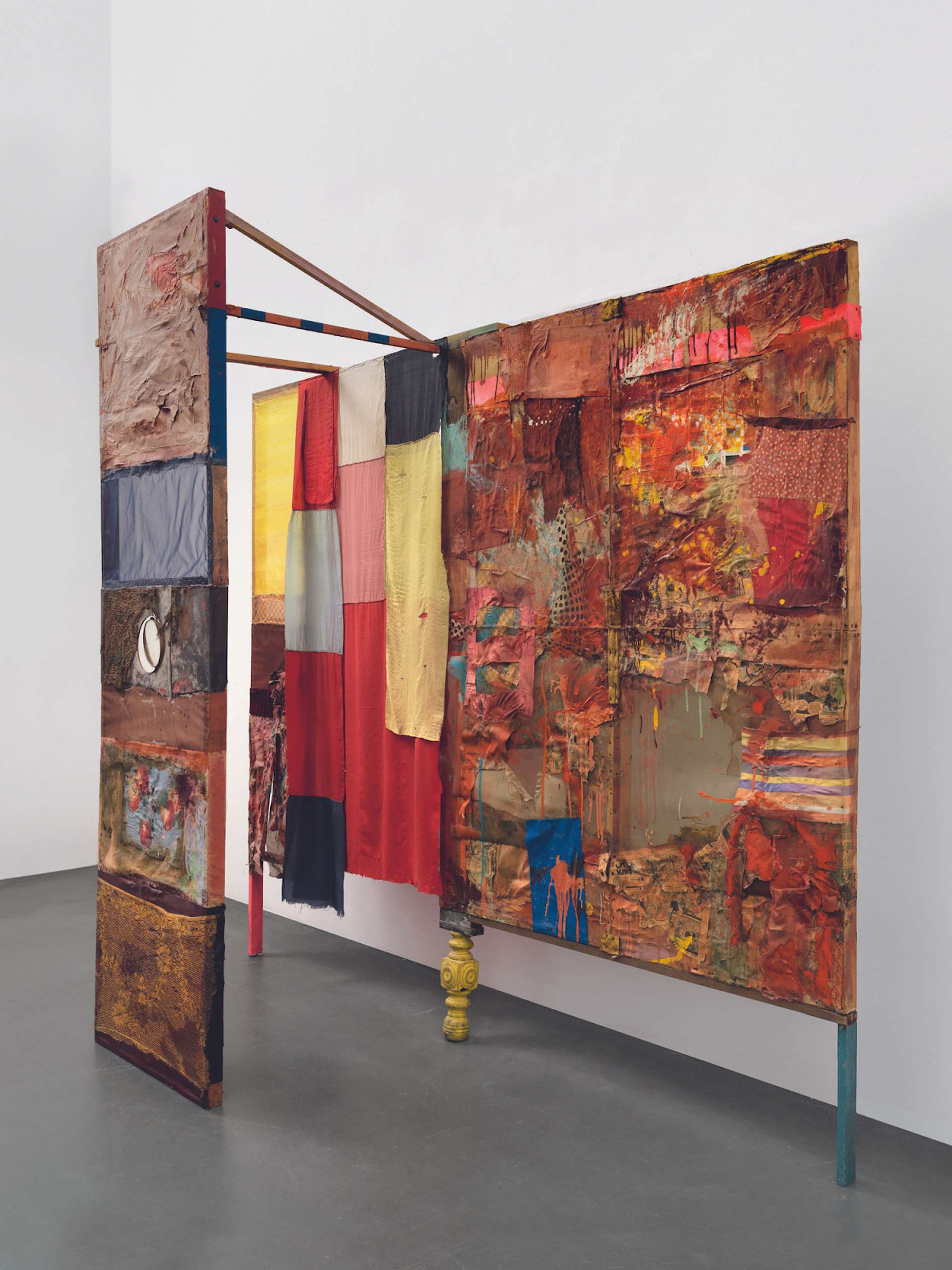 Image © Museum of Modern Art / Minutiae © Robert Rauschenberg with Jasper Johns 1954
Image © Museum of Modern Art / Minutiae © Robert Rauschenberg with Jasper Johns 1954Jasper Johns’ personal relationship with Robert Rauschenberg
Johns' personal relationship with Rauschenberg was a significant aspect of his life and artistic development. The two artists began their romantic relationship around the same time that Johns conceived his iconic artwork Flag. Their relationship lasted for about six years and had a profound impact on both artists' careers.
During their time together, Johns and Rauschenberg shared a close artistic partnership. They worked side by side, exchanging ideas, collaborating on projects, and influencing each other's artistic practices. Rauschenberg, who was already an established artist at the time, provided valuable guidance and support to Johns as he navigated the art world.
It was in Rauschenberg's studio that Johns first caught the attention of prominent gallery owner Leo Castelli. Castelli recognised the talent and potential in Johns' work and offered him a debut solo show. This exhibition, organised by Castelli, became a pivotal moment in Johns' career. Notably, the director of New York's Museum of Modern Art (MoMA), Alfred Barr, purchased four of Johns' works from this show, further solidifying his reputation as a significant emerging artist.
The influence of Rauschenberg on Johns' artistic development has been a subject of debate among art historians. Some argue that Rauschenberg's artistic techniques, such as his use of found objects and collages, influenced Johns' own exploration of mixed media and assemblage. Others suggest that the impact was more subtle, with the artists influencing each other through conversations, critiques, and shared experiences rather than directly borrowing artistic techniques.
 Image © / Whitney Museum of Modern Art / White Target Jasper Johns 1975
Image © / Whitney Museum of Modern Art / White Target Jasper Johns 1975Johns’ Auction Performance
Johns has established himself as a prolific printmaker, with a career spanning over six decades. Lindsay Griffith, the head of prints & multiples at Christie's, has hailed him as “one of the most important printmakers of the 20th and 21st centuries.” The immense variety found in Johns' artistic practice contributes to his enduring appeal in the auction market, especially in regards to his prints.
In recent years, prints by Johns, including those produced by Universal Limited Art Editions Inc, have garnered significant attention and popularity. Notably, two collections of his work, Lot 209 and Lot 190 were sold at auction in 2022. What makes Johns' prints particularly enticing for art enthusiasts is their affordability, with prices often starting in the hundreds of pounds range. The availability of authenticated prints by Jasper Johns regularly entering the market provides an accessible avenue for art enthusiasts to incorporate his art into their collections. Whether one is a long-time admirer or a new enthusiast, the world of Johns prints offers an exciting opportunity to engage with the work of this esteemed artist.
Investing in Jasper Johns With MyPortfolio
MyArtBroker's extensive database, coupled with our user-friendly platforms such as MyPortfolio empowers art enthusiasts to navigate the world of Jasper Johns prints with confidence. The availability of authenticated prints and editions, often inspired by or based on Johns' renowned paintings and sculptures, offers a more affordable entry point into his masterpieces. As demonstrated by the consistent appeal and popularity of Johns' prints at auction, his works continue to captivate collectors and generate significant interest.
With MyArtBroker's guidance and resources, collectors can make informed decisions and build a diverse portfolio of Johns prints. As the demand for Johns' prints and editions remains strong, investors can find confidence in the potential for long-term value appreciation. Whether you’re a seasoned art collector or a novice investor, the market for Johns prints offers an impressive route for both artistic appreciation and financial growth.
 MyPortfolio © MyArtBroker 2023
MyPortfolio © MyArtBroker 2023
